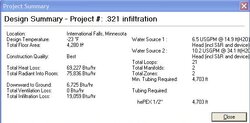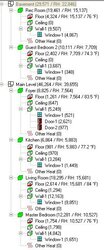I am calculating heat loss using Uponor Advanced Design Suite. I calculate 69,227Btu heat loss on 42000 sq. ft. including finished basement which is 4’ below grade. I for convenience used the default choice of International Falls, MN heating degree days of 10,000+. Previously I had used SlantFin and our actual 9028 heating degree days and calculated 90,932. Are these differences possible?
I am sizing for the worse but this may be a good argument for variable speed pumps?
I am sizing for the worse but this may be a good argument for variable speed pumps?




